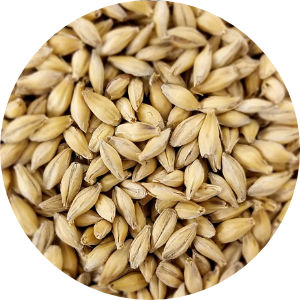Pilsner Malt
| Type: | Grain |
|---|---|
| Species: | Barley |
| Category | Base Malt |
Description

Pilsner Malt is a type of pale lager malt made from two-row spring barley that is always highly modified (i.e., good protein degradation) during malting and is kilned to an exceptionally blonde color value of no more than 2 Lovibond.
Commercial Examples: Heidelberg (Pilsner) Malt, German Pilsner (Weyermann), belgian Pilsner
Pilsner Malt Brewing Values
These are the common ranges that we've seen with Pilsner Malt over the years. Each manufacturer can have slightly different qualities, so these ranges are based on a combination and average.
This product must be added into the mash to be effective.
| SRM SRM is a scale for measuring the color intensity of a beer. Low SRM values indicate a pale straw color while higher values mean the style should have a darker color. Learn more » |
–
1.5-2 SRM(1 - 2° Lovibond) |
|---|---|
| Diastatic Power Diastatic power (DP) is a measurement of a malted grain's enzymes, which are responsible for converting the grain's starches into sugar during mashing. |
75-140° Lintner |
| PPG PPG measures the maximum starting gravity (SG) of the fermentable in points/pound/gallon. This can differ based on your mash efficiency and the amount of wort collected. |
37 ppg (1.037 SG) |
| Batch Max Certain grains and adjuncts should only be used below a maximum percentage of the grain bill. Exceeding this can cause off flavors or poor mash efficiency. |
100% |
If you see an error in our data, please let us know!
We are not affiliated with any grain manufacturer. All copyrights and data are provided by their respective owners.